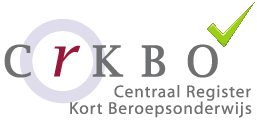Frequently Asked Questions
Do babies speak a real language?
Babies use sounds and visual cues to express their basic needs. These sounds aren't random. They're caused by their bodies responding to a physical need. If these needs aren't met or are misjudged, their cries become louder and they become distressed.
These reflex sounds form the basis of what we have called Dunstan Baby Language.
Is Dunstan Baby Language difficult to learn?
Not at all. It's like learning a foreign language. From the moment you really start listening and become familiar with your baby's sounds, you'll begin to understand them. Dunstan Baby Language helps you know what to listen for in your baby's sounds and what to read from their visual cues, so you know what your baby needs and how best to respond.
Does this method help me understand my baby better?
When your baby is happy and content, you'll notice they sleep better too. It's much easier to help a tired baby fall asleep than a baby who's still awake or overtired. When you recognize the sound for "tired" and respond to it, you'll find it easier to help your baby fall asleep. This also makes it easier to create a sleep/wake rhythm that's well-suited to your baby's needs.
Does my baby make all the sounds every day?
Your baby is making these sounds because a specific need arises that triggers a specific reflex. So you'll only hear sounds that correspond to the baby's current need and that aren't (yet) being met. For example, if your baby is struggling with burping, you'll hear this sound frequently.
Does Dunstan Baby Language work for babies over three months old?
Research has shown that the Baby Language method is very successful with young babies. This is because the method is based on reflexes that all occur in the first few months of a baby's life. After that, some of the reflexes gradually fade away. For the sucking reflex, this happens around three or four months; for other reflexes, the exact age is unknown. The yawn reflex is also familiar to adults, so it remains audible into adulthood. It's helpful to learn to recognize the sounds in early infancy, as babies don't yet consciously make other sounds, so you'll often hear the reflex sounds. A trained ear can also pick out the Baby Language sounds in older babies. And some babies will continue to use the sounds as conscious communication, for example, when they discover they're being fed at Neh's.
Should I use the techniques shown in the online course to soothe my baby?
The baby-soothing techniques shown in the online course are some of the most popular. They're included in the online learning environment to give you some ideas of what you can do now that you know what your baby needs. Always do what you think is best for your baby. If you need more help, please contact an expert.
I don't speak Dutch, does Dunstan Baby Language still work?
Dunstan Baby Language is a universal explanation of babies' reflex sounds. It's innate rather than learned. Just as a laugh, a sneeze, or a hiccup is a sound made by all people worldwide, the reflex sounds your baby makes are also universal. They don't depend on culture, language, or background.
Can fathers learn it too?
Yes, fathers and other co-parents can learn Dunstan Baby Language too. In fact, the Baby Language method provides them with valuable knowledge that allows them to be more confidently involved in caring for their newborn. Parents who have learned Dunstan Baby Language together report that it gives them a greater appreciation for each other's contributions and reduces stress in the home. Grandparents, siblings, and other caregivers can also learn Dunstan Baby Language.
Does the method also work for premature children?
Our research doesn't yet have official data on the effects of preterm birth on the recognition of Baby Language sounds. However, we regularly receive positive feedback from parents of premature babies who say they recognize the sounds in their baby and that this allows them to respond well to their child's needs.





